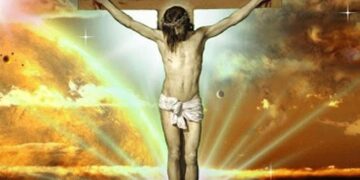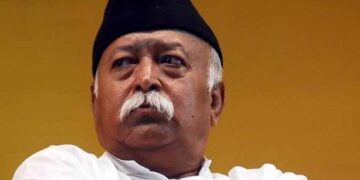Dharampal or Dharampal (English: Dharampal, born: 1922 – died: 24 October, 2006) was a great Gandhian, thinker, historian and philosopher of India. He collected many documents and wrote books in which he showed that the people of old India knew science and had invented many methods about which we do not even know. Dharampal was born in Muzaffarnagar district of Uttar Pradesh. From India to Britain, he spent almost 30 years in search of what India was like before the British. In this context, what is revealed about India from the facts and documents collected by him is contrary to the picture imprinted in our minds.\
Whoever was born after Gandhiji’s Swarajist practice in India definitely had direct or indirect communication with Gandhi. For all the Gandhian thinkers today, there are many bridges to reach Gandhi. One bridge belongs to Vinoba Bhave. The second one is of Ram Manohar Lohia. Third N. Of. It is from Bose. Fourth J.P.S. It is of Uberai and the fifth bridge is of Dharampal. Dharampal himself had built a bridge for Gandhi to reach Sanatan Bharat and understand the British rule in India. From 1942 to 1966, under the influence of Dharampal Miraben, Gandhi remained engaged in creative work. The theorist of such Gandhian work is traditionally considered to be Vinoba Bhave. But it cannot be said officially how familiar and influenced Dharampal Vinoba was with literature. From 1966 to 1986, most of his time was spent in research and writing. During this period, he basically worked to understand and explain India’s traditional knowledge fund and structures through European eyes. As a sequel to this, ‘Civil Disobedience in Indian Tradition with Some Early Nineteenth Century Documents’ was published in 1971. In 1971 itself, his second important book ‘Indian Science and Technology in the Eighteenth Century: Some Contemporary Accounts’ was published. His third book ‘The Madras Panchayat System: A General Assessment’ came out in 1972. In the coming years, many more of his books came out, in which the book named ‘The Beautiful Tree’ has special importance. The structure of these books and the style of their compilation also meets the Western standards on the basis of Western sources and they are gradually being used in universities to understand the Indian society in the same way as the books of Anand Kumar Swami, A. Of. Saran, N. Of. Bose or J. P.S. It is from Uberai’s books. Among these, at least N. Of. Bose and J. P.S. Uberoi has considered himself a Gandhian social scientist and his academic identity has also remained the same.
There is a difference of a decade between Padharampal’s books published in 1971-72 and 1983 and a lot happened in these two decades in India and the world. The decade of 1970 was influenced by the domestic and foreign events of 1967-68. The practice of contract governments started in this country from 1967. Since 1968, student movement, jazz music, hippie culture and post-modernism have become popular in France and Western countries. Nehruism breathed its last in India. The joint experiment of Indira Gandhi and Marxist thinkers in the form of Jawaharlal Nehru University, the experiments of Rabindranath’s Visva-Bharati, Shantiniketan and Madan Mohan Malaviya, not only Banaras Hindu University, Kashi, but also the pillars of British Raj, Calcutta, Bombay, Madras, Delhi and Allahabad Universities. Started falling. In this sequence, Cambridge Economic History, Part 1 was published under the editorship of Tapan Rai Choudhary and Irfan Habib. The complementary relationship between the content of this edited book and Dharampal’s publications of 1971-72 was seen, recognized and appreciated. But after the publications of 1983 the situation started changing.
After the assassination of Indira Gandhi on 31 October 1984, a new experiment in television began. CNN later broadcast the Iraq War. Rajiv Gandhi’s advisors increased the importance of texts shown on screen instead of written texts by continuously publishing Indira Gandhi’s corpse from October 31, 1984. India has also been an oral society. The importance that written words had in Europe is not there in India. In our country the book is not considered a scripture. Here, the words spoken on the basis of Guru-Acharya’s life experience are scriptures. By 1986, Dharampal also understood this. And his vision changed. The pattern of life changed. This change cannot be understood on the basis of his books alone. But it can be identified in published books also. From 1986 he began to consider it important to publish British documents about British conspiracies to destroy Indian faiths. Under this, in 1999, his book ‘India’s Plunder and Infamy: The English Crusade in the Early Nineteenth Century’ was published. Then in July 2002 the British original Cow Slaughter in India 1880–1894 was published. But between 1986 and 2002, the sequence of dialogue, contemplation, meditation and discourse increased in his daily routine. Meanwhile, he kept trying to understand the common man, folk culture and Sanatan tradition. He kept insisting on re-reading of the scriptures loved by the people. In understanding Dharampal of this period, both his books ‘Bharatiya Chitta, Manas aur Kaal’ and ‘India’s Swadharma, History, Context of Present and Future’ are of great importance. But unfortunately, serious review of these books has not been done deliberately. Dharampal’s writings and his life are an important means of understanding Sanatan Dharma and Sanatan tradition in the 18th and 19th centuries.[2]






